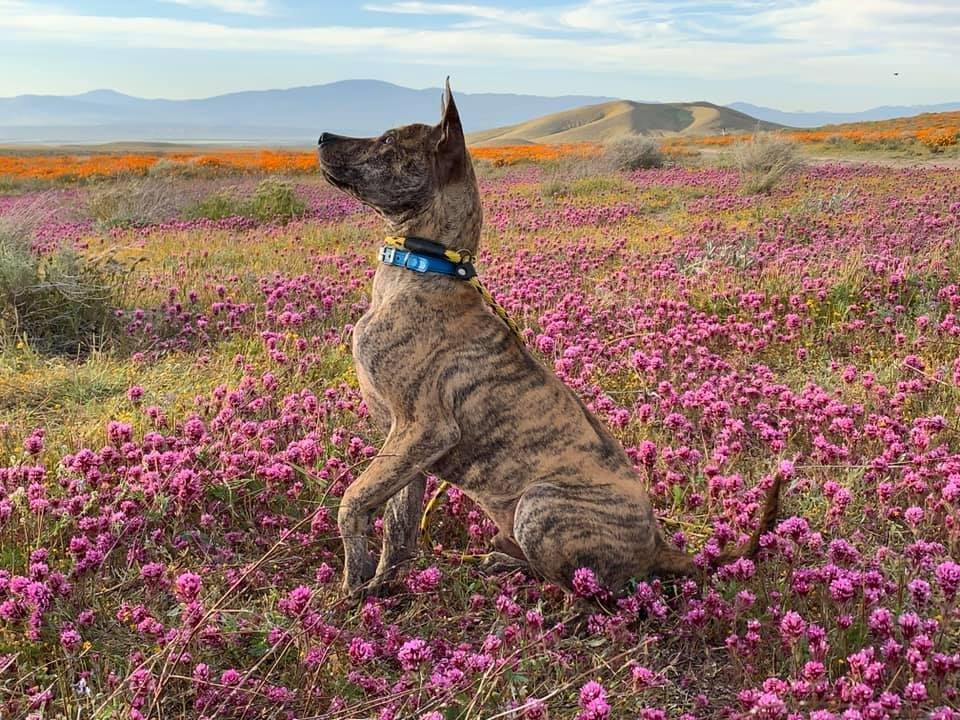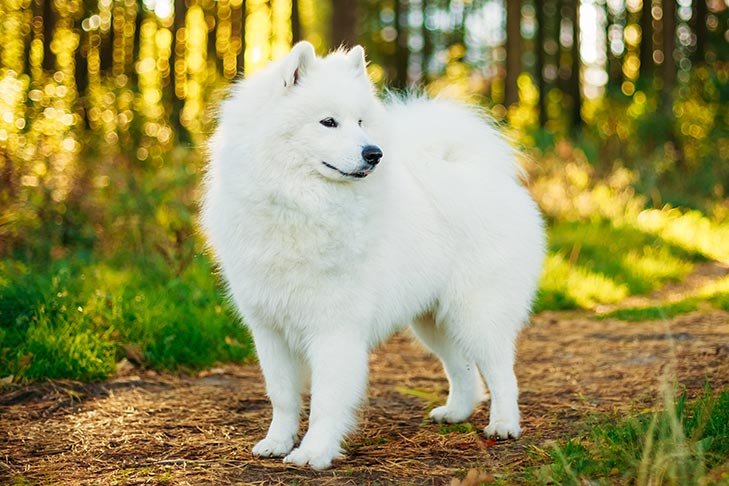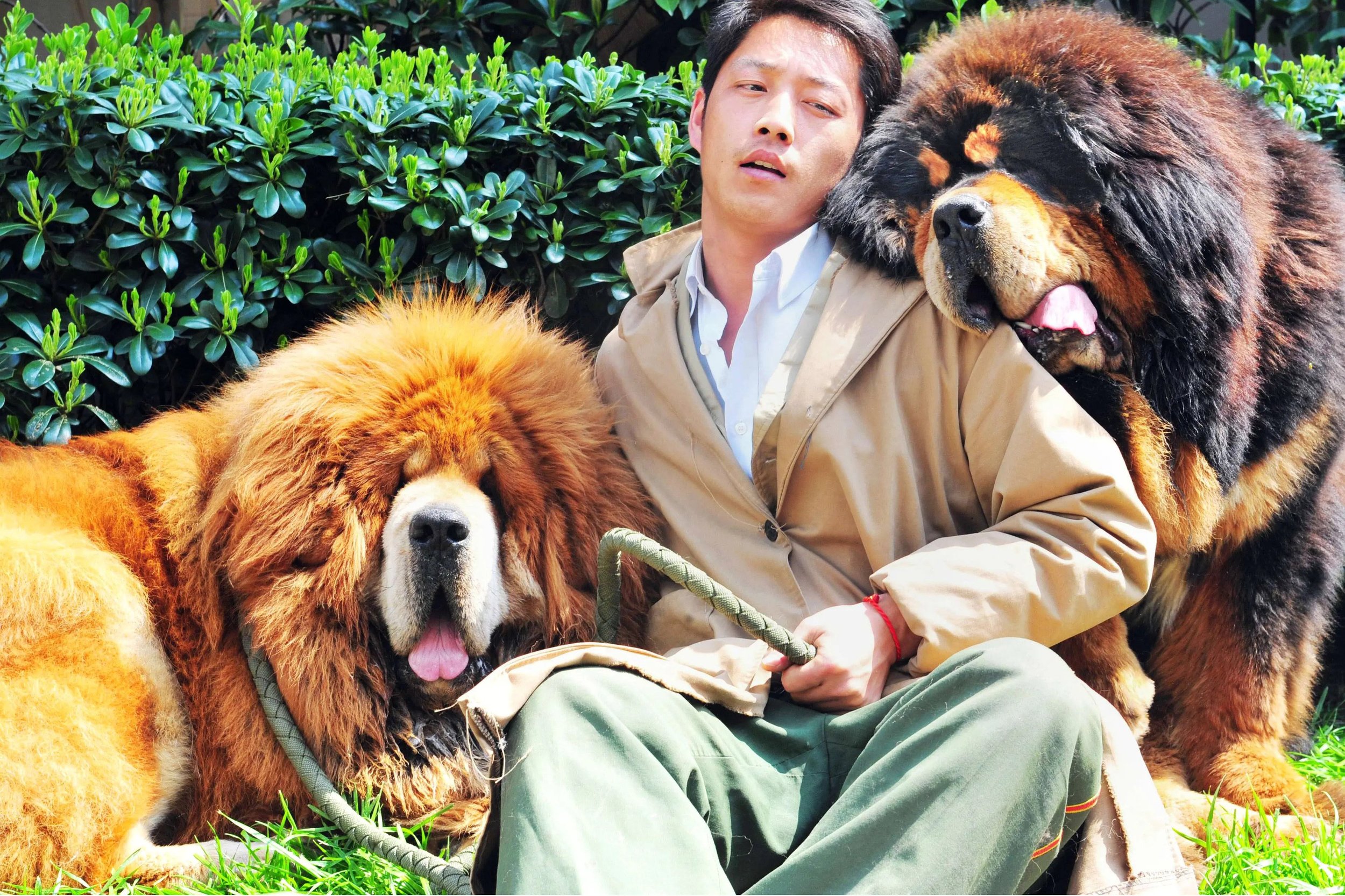Asian American & Pacific Islander Heritage Month
Happy AAPI Heritage Month!! We wanted to celebrate by showing off some of the lovely breeds of dogs Asian and Pacific Islander communities have been raising and keeping for hundreds of years!
Chow Chow - China
Chow Chow (鬆獅) is a large dog from Northern China. It has extremely thick hair that makes it look like a giant teddy bear. The Chow Chow has been identified as a basal breed that predates the emergence of the modern breeds in the 19th Century. One Chinese legend mentions large war dogs from Central Asia that resembled black-tongued lions. One Chinese ruler was said to own 5,000 Chows. The Chinese also used Chows to pull dog sleds through swampy terrain, and this was remarked upon by Marco Polo. Many cite their resemblance to legendary fu dogs who are said to guard palaces, tombs, temples, and more.
Pekingese - China
The Pekingese (北京人) breed originates from China, and it’s a small dog that often has long hair, though they are also available with short hair. The breed was favored by royalty of the Chinese Imperial court as both a lap dog and companion dog, and its name refers to the city of Peking (Beijing) where the Forbidden City is located. They are loyal and comical breeds that many small dog fans enjoy all over the world.
Shiba Inu - Japan
Shiba Inu (柴犬) is the smallest Japanese dog and one of the oldest breeds on earth! Excavations dating from around 7,000 B.C. have also confirmed the presence of small dogs in Japan at that time, and primitive drawings dating to 300 BC depict Shiba Inu-like dogs chasing wild prey. The Shiba Inu was bred to hunt and flush small game, such as birds and rabbits. During the Meiji Restoration, western dog breeds were imported and crosses between these and native Japanese breeds became popular. From 1912 to 1926, almost no pure Shiba remained. Shiba nearly became extinct during World War II due to a combination of food shortage and a post-war distemper epidemic. All subsequent dogs were bred from the only three surviving bloodlines.
Akita Inu - Japan
The Akita Inu (秋田犬) originated in the snowy and rural lands of Odate, Akita Prefecture, a wild and mountainous region of Japan. They were trained to hunt animals such as elk, wild boar, and Ussuri brown bears. From the 1500s into the 1800s, the Akita served as companions for samurai. This list would not be complete without the mention of one of the goodest boys ever. The story of Hachikō, the most revered Akita of all time, helped push the Akita into the international dog world. Hachikō was born in 1923 and owned by Professor Hidesaburō Ueno of Tokyo. Professor Ueno lived near the Shibuya Train Station in a suburb of the city and commuted to work every day on the train. Hachikō accompanied his master to and from the station each day. On May 25, 1925, when the dog was 18 months old, he waited for his master's arrival on the four o'clock train, but Professor Ueno had suffered a fatal brain hemorrhage at work. Hachikō continued to wait for his master's return. He traveled to and from the station each day for the next nine years. He allowed the professor's relatives to care for him, but he never gave up the vigil at the station for his master. He is commemorated at Shibuya Station with a bronze statue in his honor being erected in 1934.
Chippiparai - India
The Chippiparai (चिप्पिपरै) is a sighthound from Tamil Nadu in southern India. The Chippiparai is most frequently found in the regions of Virudhunagar, Tirunelveli, Thenkasi, Thoothukudi, and Madurai, thought to be descended from Salukis the breed was historically kept by royalty in southern India, its name derived from a village name of Sippipparai in Vembakottai Taluk of Virudhunagar District. The Chippiparai was traditionally used to hunt small game, predominantly hare, due to its intelligence and biddable nature the breed has successfully been trained as police dogs.
Kintamani Dog - Indonesia
The Kintamani (anjing kintamani)or the Kintamani-Bali Dog is a dog native to the Indonesian island of Bali and originated from the Kintamani region. It is a popular pet for the Balinese and locally Bali's only official breed. The breed was developed from free-roaming local Bali street dogs and was recognized by the FCI in 2019. The Bali street dogs are most closely aligned with the Australian dingo, more distantly related to AKC recognized breeds of Asian origin but not those of European origin.
Korean Jindo - Korea
The Jindo dog (진돗개) is an indigenous dog native to Jindo Island in Korea. It is one of Korea's Natural Treasures, prized for its loyalty and homing instinct. Because of the special status of the Jindo, it is very difficult to export pure Jindo Island Jindo dogs outside of Korea. Jindos marched in the opening ceremonies of the 1988 Summer Olympic Games in Seoul, Korea.
Phu Quoc Ridgeback - Vietnam
The Phu Quoc Ridgeback (Chó xoáy Phú Quốc) is a breed of dog from the island of Phú Quốc in Kiên Giang Province in southern Vietnam. The Phu Quoc Ridgeback is one of only three breeds that has a ridge of hair that runs along its back in the opposite direction to the rest of the coat. The breed was developed as a semi-feral companion to hunt for food and guard the homes of native islanders. Historically, Phu Quoc Ridgebacks were not purposefully bred, instead relying on random pairings in the relative isolation of island life to continue to maintain their unique population. According to native Phú Quốc islanders, there were originally three sizes of the breed, each uniquely bred to hunt different sizes of game over different terrains. A Phu Quoc Ridgeback won the Hanoi dog show in 2013. The breed was selected as the mascot for the 2018 annual Nguyen Hue Flower Street in Ho Chi Minh City, symbolizing the Lunar Year of the Dog as per the Vietnamese zodiac.
Samoyed - Samoyede People of Russia
The Samoyed (Самое́д) is a spitz-type dog which takes its name from the Samoyedic peoples of Siberia. The Samoyed dates back to 1000 BCE, and he hasn’t changed much in appearance or temperament in all that time. The tribe used the dogs they called bjelkiers to herd reindeer, pull sledges, and occasionally hunt bears. These friendly and useful dogs were treated as members of the family, living with them in their nomadic dwellings.
Poi Dog - Kingdom of Hawaiʻi
The Hawaiian Poi Dog (ʻīlio mākuʻe or ʻīlio poi) is an extinct breed of pariah dog from Hawaiʻi which was used by Native Hawaiians as a spiritual protector of children. The Poi dog were descended from the Polynesian dogs brought to the Hawaiian Islands by the Polynesian people. The dogs were often fed poi, which is a granular paste made from the taro root. The vegetarian poi diet made the dogs become inactive and obese. Over the years this vegetarian diet changed the shape of the dogs’ skulls. The heads became large and flat due to the disuse of the bones from lack of chewing. These dogs eventually became very lazy, waddling around with distended bellies.
Kurī - New Zealand
Kurī is the Māori name for the extinct Polynesian dog. It was introduced to New Zealand by the Polynesian ancestors of the Māori during their migration from East Polynesia in the 13th century AD. According to Māori tradition, the demigod Māui transformed his brother-in-law Irawaru into the first dog. They were often kept to hunt birds. The remains of the last known specimens, a female and her pup, are now in the collection of the Museum of New Zealand Te Papa Tongarewa.
Tahitian Dog - Tahiti
The Tahitian Dog (ʻŪrī Mā’ohi) is an extinct breed of dog from Tahiti and the Society Islands. Similar to other strains of Polynesian dogs, it was introduced to the Society Islands and Tahiti by the ancestors of the Tahitian (Mā’ohi) people during their migrations to Polynesia. They were closely related to the Hawaiian Poi Dog and the New Zealand Kurī; the latter is believed to be a descendant of the breed. The Tahitian Dog became extinct in the Society Islands some time after the arrival of European settlers due to the introduction of, and interbreeding with, European dog breeds. This breed and other Polynesian dogs were sometimes considered a distinct species by 18th century naturalists and scientists, and received scientific names such as Canis domesticus, indicus taitiensis.
Siberian Husky - Russia
Siberian Huskies (Сибирский хаски) originated in Northeast Asia where they are bred by the Chukchi people of Siberia for sled pulling, and companionship. It is an active, energetic, resilient breed, whose ancestors lived in the extremely cold and harsh environment of the Siberian Arctic. They were brought to Nome, Alaska in 1908 to serve as working sled dogs, and were eventually developed and used for sled dog racing. Another good boy to mention!! On February 3, 1925, Gunnar Kaasen was the final musher in the 1925 serum run to Nome to deliver diphtheria serum from Nenana, over 600 miles to Nome. The name of Gunnar Kaasen's lead dog in his sled team was Balto, although unlike the real dog, Balto the character was portrayed as a wolf-dog in the film. In honor of this lead dog, a bronze statue was erected at Central Park in New York City.
Tibetan Mastiff - Tibet
The Tibetan Mastiff (འབྲོག་ཁྱི། འདོགས་ཁྱི། སེང་ཁྱི།) is a large breed native to the Tibetan region of South Western China. The name “mastiff” was incorrectly attributed to this breed by Europeans who found it similar to large dogs throughout Europe. A more apt name may be the Tibetan Mountain Dog or the Himalayan Mountain Dog. The breed is so ancient and Tibet has always been so isolated, that it’s impossible to say how or when the breed came to be. They were often kept to protect Buddhist monasteries from bears, wolves, and snow leopards. The breed has gained popularity worldwide, although the breed is considered somewhat uncommon according to the AKC.
Lhasa Apso - Tibet
The Lhasa Apso is a non-sporting breed native to the Tibetan region of South Western China. Smart, confident, and complex, Lhasas are family comedians but regally aloof with strangers. They get their name from a combination of the city of Lhasa and what some believe may be the anglicized form of the Tibetan word for goat or goatee. The lavishly coated Lhasa Apso is a thousand-year-old breed who served as sentinels at palaces and monasteries isolated high in the Himalayas. They are quite unique funny little guys that can be now found all over the world.
Shar-Pei
Originating in Southern China with heritage that dates back to 200 BC, the Shar-Pei (沙皮) is quite the unique breed. With their distinct wrinkles and short coarse coat, they stand out from the rest. The breed has been identified as a basal breed that predates the emergence of the modern breeds in the 19th century. They were kept for centuries as guard dogs throughout the Han Dynasty. The Shar Pei was once very popular, but war and political turmoil in China in the 20th century took its toll on the breed and by the 1970s it was close to extinction. The breed has been brought back, but the modern breed is believed to be genetically distinct from the ancient breed, being bred with western breeds like the bull terrier and bulldog. It is believed much of the genetics are closely shared with its northern neighbor in the Chow Chows, both having the distinct purple tongue.
Central Asian Shepherd - Turkmenistan
The Central Asian Shepherd (Туркменский волкодав) is a livestock guardian breed native to Turkmenistan. They were kept to protect herds of sheep and goats as they roamed the countryside. It is considered a symbol of pride and national heritage in Turkmenistan, where a gold statue of the animal was unveiled in 2020. After the October Revolution, the Soviet government prized the breed for it’s strong working characteristics, importing them throughout the USSR for use as guard and military dogs. Today the breed can be found throughout Central Asia and into many former Soviet states.


















